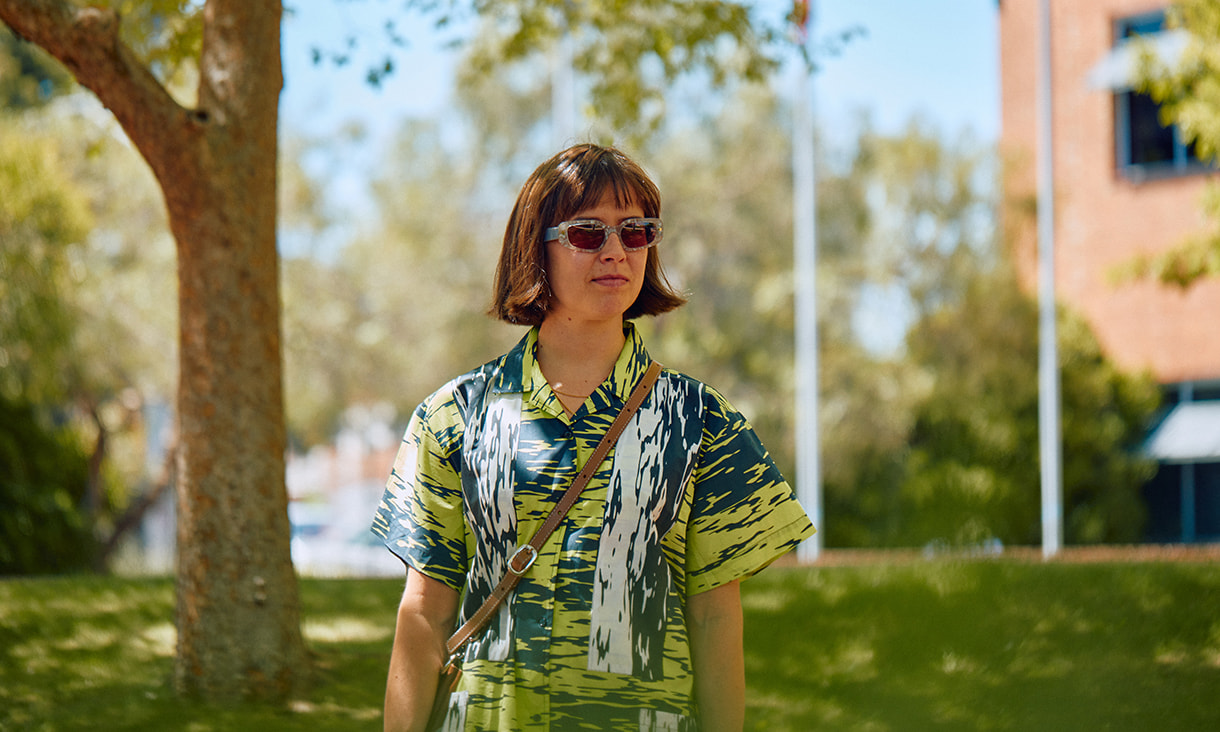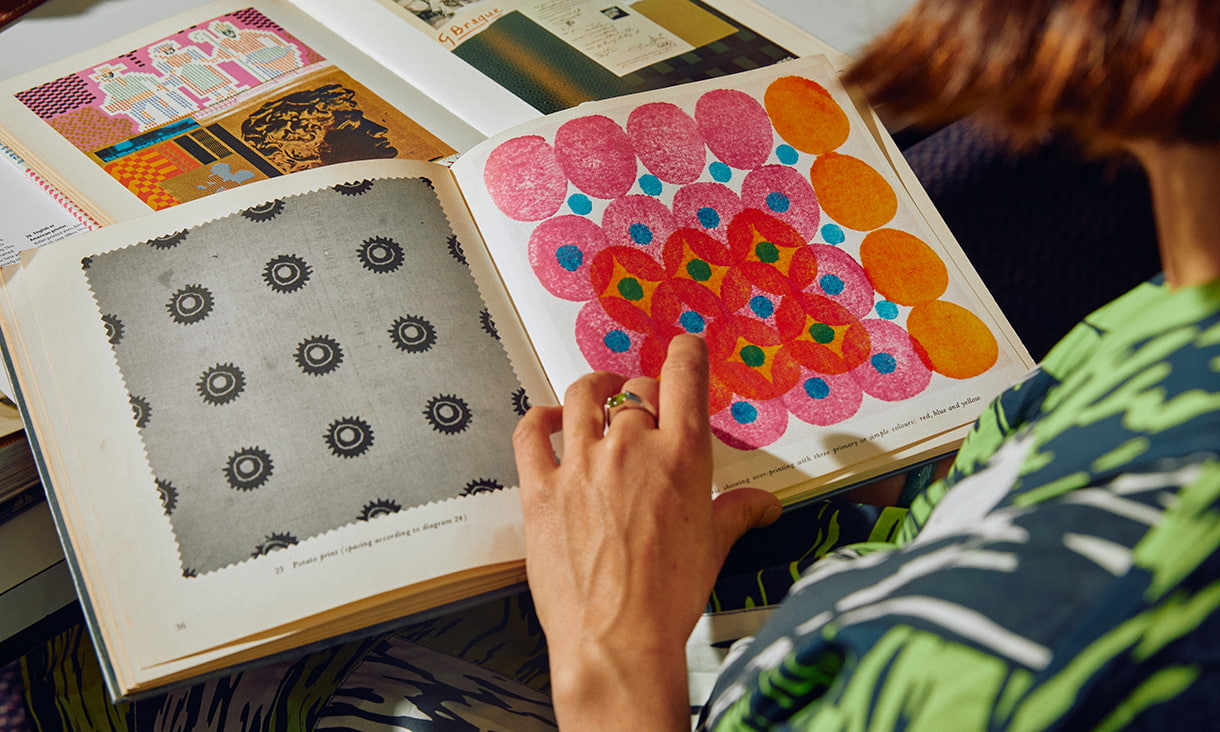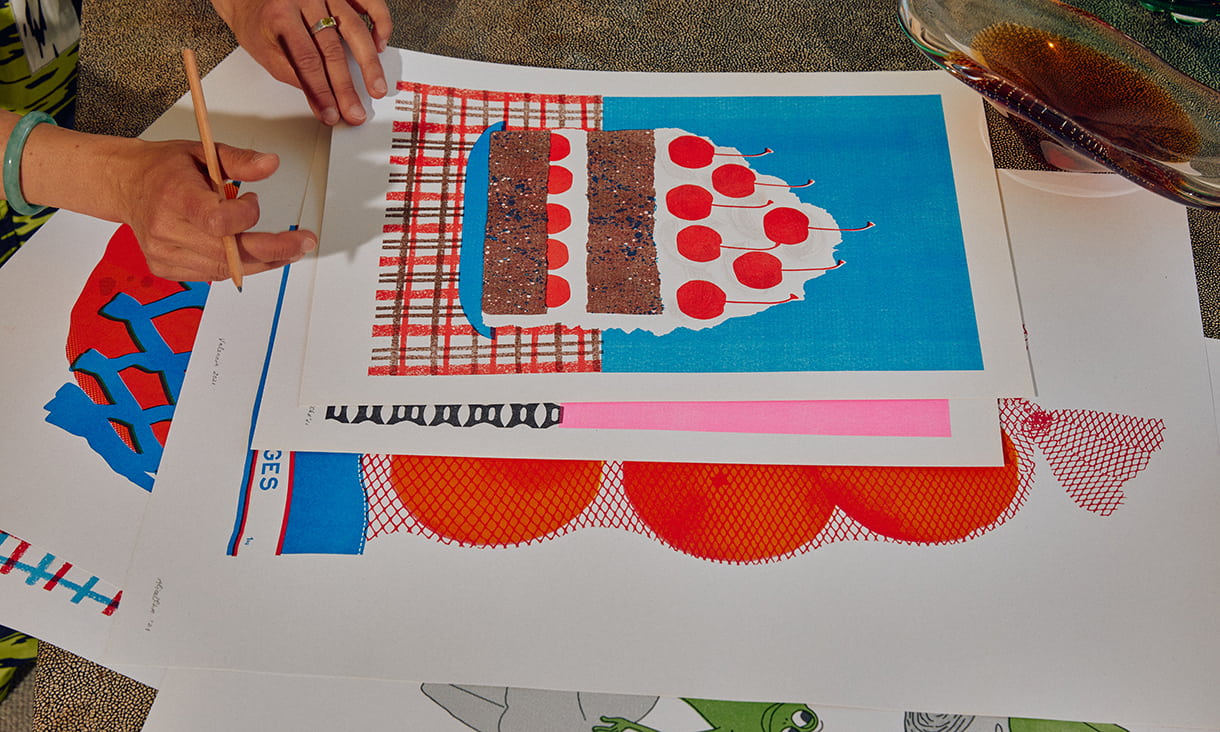These TAFE courses in graphic design and digital media can be your speedy entry into a creative career.
Thinking about a career change into the exciting world of design? RMIT’s TAFE courses in graphic design and digital media will give you the confidence to flex your creative skills or become a UX professional in just 12 months.
Our design courses are taught by industry experts and will prepare you for diverse roles across industries, two of the reasons why RMIT is ranked #1 in Australia and #21 in the world for Art and Design in the QS Rankings by Subject 2025.
Find out why these alumni turned to RMIT to get the graphic design and digital media skills they wanted, and how upskilling in these areas gave them career options they never dreamed of.

Diploma of Graphic Design, 1 year
Demand for skills in graphic design
The Australian Government’s Job and Skills Outlook indicates strong future growth for graphic designers, with the already large workforce expected to grow by at least 500 workers per year.1
Graphic designers’ creative and technical skills are in demand for print and digital assets, design layout, logos, icons and infographics or to develop advertising collateral.
Melbourne illustrator and RMIT alumni Alice Oehr was looking to learn graphic design and software skills quickly, after she graduated from a Bachelor of Arts but found her job prospects underwhelming.
“I didn’t want to spend four more years studying. I was a little bit older, and I was ready to work and start making stuff.
“I chose the diploma at RMIT because I wanted to get software skills and be a well-rounded designer who could work in any area.
“The graphic design course taught me all the skills I needed, like how to lay out a book, retouch photos, illustrate and make patterns, so I learned what I was strongest in and specialised in that.”
Career outcomes of the Diploma of Graphic Design
Working as a graphic designer can involve a career in print and digital media. You might find work in areas like advertising and promotion, art direction, branding and corporate identity, instructional design, packaging, signage and web design.
The placement requirement in the graphic design course helped Alice get experience with the type of work she wanted to do.
"For the placement you can choose where you want to go, either by contacting designers and studios you admire or asking the teachers to recommend someone.
“I reached out to an illustrator I looked up to who’d had an unusual career and done a lot of different things, which appealed to me. We got along so well that after the placement I ended up working for her. If it’s a good fit, they will consider you for a job, especially because they know the quality of the knowledge you'll get in this course.
“One of the things I’ve been doing is teaching life drawing classes with Apple at Lamington Drive. I was approached by Apple to teach classes with their new iPad because I’m a digital generation illustrator and passionate about digital drawing.”
Why RMIT?
“RMIT has a great reputation for design,” said Alice.
“I was drawn to studying in Brunswick because I like the area; it’s a vibrant arts community. I liked the feel of a smaller campus, you’re around other creative people like textile designers and there’s great printing equipment.
“I came out of the graphic design course feeling extremely well equipped to go to work. It was the perfect vehicle for me to learn design software and get skills to start working in any area of design.”


Demand for skills in digital media
User Experience (UX) and User Interface (UI) professionals work at the intersection of technology and design.
Both UX and UI designers have a projected 21.7% job growth in the next 5 years, with the most common salary between $95k to $110k.2
Wanting to get transferable digital skills and learn UI/UX, Anna chose to study vocational design courses while her work as a music booker and events producer was on hold in 2020.
“Almost all my work in the arts sector disappeared when the pandemic first hit, so instead of dwelling on things I couldn’t fix I enrolled in the Certificate IV in Design,” said Anna.
“I discovered I could still learn technical skills while flexing my creative muscles and I decided to further my knowledge and enrol in the Diploma of Digital Media Technologies.”
The Diploma of Screen and Media (Animation, Gaming and Visual Effects) has replaced the Diploma of Digital Media Technologies in 2022 and will help you start your journey to become a highly skilled screen and media designer.
Career outcomes of the Diploma of Screen and Media (Animation, Gaming and Visual Effects)
The diploma is designed to make you a highly skilled and in-demand content creator and digital professional, working in anything from user experience design, art direction and animation to emerging fields like virtual and augmented reality.
“Digital skills can be transferred to so many different roles these days,” said Anna.
“My study gives me a leg up to a career where I can use my creative and technical knowledge, and the broad range of skills I got in the different course units means I’m now prepared to work in a variety of areas.
“I never dreamed I could create an animation from start to finish, render 3D objects or design applications. You really get challenged but in a good way, and you learn that you can do more than you think.”
Why RMIT?
Fellow student Stephanie wanted a career change after losing her job in sports events marketing in early 2020.
“I decided to find an industry I could upskill in so if there’s ever another global pandemic, I could continue to work remotely online, and not rely on roles that require me to be physically present,” said Stephanie.
RMIT’s reputation for design as well as the course structure and assessments were her deciding factors.
“RMIT was a financially viable option for me with a government loan available. Other comparable courses I found from private institutions were considerably more expensive and didn't offer a VET loan.
"The ongoing assessments and weekly interactive skill learning and development were great for staying engaged with the course material. I learned a lot more in this course than I have in previous undergraduate study because of continuous practical engagement and less grading pressure.
“I wanted intense skills training and I learned so much in one year - more than I would have in a three-year degree.”
Story: Hilary Jones
1 Australian Government. 'Job and Skills Outlook: Graphic and Web Designers, and Illustrators'. Accessed 5 November 2025. https://joboutlook.gov.au/occupations/graphic-and-web-designers-and-illustrators?occupationCode=2324
2 Seek. 'How to become a User Experience Designer and How to become a User Interface Designer'. Accessed 5 November 2025. https://www.seek.com.au/career-advice/role/user-experience-designer, https://www.seek.com.au/career-advice/role/user-interface-designer


